

THE CHANGING FACE OF GEOPOLITICAL RISK
4
The World Is About To Change - And So Are We CeFPro Managing Director, Andreas Simou, looks at how political events around the world in 2024 will impact our future risk management strategies
2024: THE YEAR THE WORLD CHANGED THE RULEBOOK ON RISK
A double election year will have significant consequences for risk management
Merlin Lineham, Risk Manager, European Bank for Reconstruction and Development
MANAGING GEOPOLITICAL RISK IN A FAST-CHANGING WORLD
6
10
Proactive strategies, diversification, and adaptation: the cornerstones of future risk management
With insight from Søren Agergaard Andersen, Chief Risk Officer at Nordea Asset Management
BANKS MUST ADAPT - INTEGRATING CLIMATE RISK INTO LIQUIDITY MANAGEMENT
Understanding the impact of climate risk on liquidity through data, risk assessment and stress testing
With insight from Rocco Fanciullo, Head of Group Liquidity Risk Management, Unicredit
A NEW ERA IN RISK MANAGEMENT - LESSONS FROM SVB’S COLLAPSE
14
How SVB’s collapse highlights crucial improvements needed in risk management and governance
With insight from Emma Hagan, Chief Risk and Compliance Officer(UK), ClearBank













magazine for non-financial risk
The World Is About To Change - And So Are We
16
HARNESSING AI FOR CRITICAL BUSINESS DECISIONS
AI offers efficiency and ROI but requires careful risk management and transparency
With insight from Alexandra Matthews, Underwriter AI Performance Risk, Munich Re
THE CRITICAL NEXUS OF ENVIRONMENTAL RISKS AND FINANCIAL SYSTEMS
18
Why global action is needed to balance environmental and financial system risks
With insight from Nicholas Silitch, former Chief Risk Officer, Prudential
RISK MANAGEMENT IN FINANCIAL INSTITUTIONSSTRATEGIES FOR FUTURE PREPAREDNESS
20
How openness, agility and robust leadership are key to effective future risk management
With insight from Kanwardeep Ahluwalia, Co-Head of Global Markets Risk, Bank of America
THE FUTURE OF FINANCIAL SERVICES AND CONSUMER DUTY - INSIGHTS FROM INDUSTRY EXPERTS
22
The growing pressure to meet regulatory changes on consumer duty and transparency
With insight from Paul Gill, Chief Risk Officer at the Mortgage Advice Bureau
WE NEED TO TALK ABOUT ENABLEMENT IN RISK
24
How the changing nature of risk management is more about enablement than prevention
Shamial Afzal, Global Head of Strategic Supplier Oversight, Legal & General
The views and opinions expressed in this publication are those of the thought leader as an individual, and are not attributed to CeFPro or any particular organization.




























Andreas Simou Managing Director
Welcome to the latest edition of iNFRont magazine. It’s been a busy time for us here at CeFPro with our two flagship events – Risk Evolve in London and Risk Americas in New York – both taking place since the last edition of the magazine came out, in April and late-May respectively.
Geopolitical challenges are as strong as they have been any time since the end of the Cold War. It’s hard to think of a time in the last 40 years when the geopolitical landscape has been anywhere near as fragile as it is today.
On-going tensions in the Middle East and war in the Ukraine have increased socio-economic uncertainties. West certainties have become less secure, compounded by general elections in India, UK, USA – among other strategically important regions such as EU, Mexico and Brazil. Consequently, the role and responsibilities of the risk professional have taken on completely new dimensions.
The nature and future of geopolitical risk takes center stage in this edition of the magazine, with two articles that look at the risk challenges ahead from slightly different perspectives. Just what will elections for two of the world’s financial powerhouses – the UK and the USA – mean for banks and other finance organizations?
We also examine some of the topics that were front of mind for our speakers and delegates at the Risk Evolve event –not least the tricky balancing act of integrating climate risk management into our financial systems, and an informed examination of what went wrong at Silicon Valley Bank.
You’ll also be able to read insights into the work financial organizations in the UK need to complete to be compliant before the final deadline on the new Consumer Duty regulations.
If you’re a regular reader, you’ll probably have realized by now that there have been some changes to the magazine. iNFRont magazine was always designed to be written by industry professionals, for industry professionals, as our mission at CeFPro is to advance the industry through knowledge sharing and thought leadership. As part of our new look, we’ll be offering more breadth in coverage on current risk themes, with the magazine moving to a monthly edition from now on, plus a new design and layout, which we hope you find welcoming and informative.
There are more changes on the way, though, and we’ll be working on those over the summer, so we’re keen to hear your feedback – positive or otherwise – on this issue so we can reflect it in future editions.
Please feel free to connect with me if you wish to contribute to iNFRont, or maybe one of CeFPro’s events, market intelligence reports or some other way that would advance the risk profession. ‘Risk’, and risk professionals, have always been important in our financial system, though the ever-complex post-pandemic world means the need has never been greater.
As we close in on the summer, we’re already looking ahead to the second half of the year with a number of events already confirmed to take place between September and Christmas. You can find out more about of all of these – and secure your place at them – by visiting our dedicated event portal on CeFPro Connect.
Creating a Connect account is currently free, takes less than a minute, and puts you first in the queue for all the latest news and insights from the risk community.
In the meantime, I hope you enjoy this issue of your new-look iNFRont!
Andreas
in our next issue, please contact infront@cefpro.com

















Contact me on LinkedIn | Contact

2024: The Year the World Changed the Rulebook on Risk

Merlin Linehan is Risk Manager for the European Bank for Reconstruction and Development and works across business resilience, crisis management, information security, operational risk and climate risk. He specialises in geopolitical and political risk, global risk, crisis management and business resilience. He is a regular presenter, writer and commentator, and has been featured by many media outlets, including the BBC, Global Capital and the Financial Times.
The end of the Cold War for many marked a new golden age of prosperity and peace. US-led globalization saw capitalism and democracy spread to new parts of the world.
While regions such as Africa remain underdeveloped, other parts of the world - notably China and Eastern Asia - oversaw rapid and unprecedented economic expansion.
However, over the last ten years new trends have cast a shadow over globalization creating new threats for multinational companies.
Competition between states over resources and technology fuelled by opposing ideologies is nothing
new, but it has returned with a new intensity. A menacing wave of misinformation, increasing inequality and rapid technological change adds fuel to this fire. Most ominously of all, the threat climate change induced extreme weather and its knockon impacts in the form of migration, conflict and cascading natural disasters presents the biggest long term geopolitical risks.
These threats have pushed (geo)political risk up the agenda of boards, executives and organizations across the world.
There is a perception that geopolitical shocks increasingly threaten the stability of both countries and global businesses. But we can build resilient
organizations capable of dealing with the shocks and even thriving in an increasingly fractured world.
Rising Competition
Competition over natural resources and technology is on the rise. Nations are looking to the future and increasingly realizing future of energy increasingly lies with renewable and climate technology.
Additionally, advances in technology (such as AI, drones, computing) hold the key to future economic and military strength. Renewable energy and many technological advances are dependent on an advanced manufacturing base and reliable supply of critical materials such as copper, lithium, cobalt, nickel and many other materials that are the raw ingredients for solar panels, batteries, laptops, phones and many military applications.
As a result, nations are introducing policies that will give them the advantage in these sectors.
China for many years has subsidised its climate technology sector and leads the world in the manufacture of batteries, electric vehicles, and solar panels. Realizing China’s lead in this crucial sector, other powers have responded to challenge Beijing’s dominance.
The misnamed US Inflation Reduction Act (IRA) which has transformed the landscape for US energy, provides incentives for renewable energy manufacturers to invest in the sector and take advantage of tax breaks and subsidies.
The resulting boom of US climate technology manufacturing means that other countries are sure to emulate their approach, increasing global competition for market share of clean energy tech and for the critical materials that are needed to build it.
Competition over technology is also on the rise. In 2022 the US government placed export controls over semiconductor technology to China - at a stroke providing the US a military and industrial advantage while weakening a rival.
This move cut the supply of chips which enable advanced artificial intelligence – a hot area in terms of technology right now.
China hit back placing restrictions over the export of technology around rare earth processing, which is an important part of manufacturing much climate technology such as electric car batteries.
Most concerning is when competition intensifies into open warfare such as the Russian Invasion of Ukraine.
Another scenario which would inflict and even deeper damage the global economy is conflict over Taiwan. Even a military enforced blockade of the island could freeze trade routes around China.
Cutting off the world’s biggest trading nation would cripple the global economy and disrupt global politics in way not seen since the Second World War.
The rise of non-military measures such as sanctions, protectionism, and control over supply routes as an alternative to warfare has increased. Companies need to understand the impact of these measures or face legal, reputational or supply risks.
How can Organizations Develop Resilience?
Understanding political risk is an essential and perhaps obvious first step. By adopting horizon scanning, scenario planning and geopolitical forecasting organizations cannot predict the future, but they can understand key trends and how they might affect their strategy.
Geopolitical risks may appear abstract, but they have a direct impact on business operations, via terrorist attacks, supply chain disruption or policy shifts.
Ensuring there is a process around critical event management (CEM) function in place to triage, react and address risks of any kind is crucial. This is usually through a crisis team drawn from different parts of the organization.
What is needed beyond the CEM is cultural change. Organizations need to be adaptable and flexible, ensuring lessons from previous incidents are not only learnt, but changes implemented.
No organization will claim they don’t want to be flexible. But in reality resilience can be difficult to implement in organizations designed for efficiency.
A resilient organization will have redundancy which can look expensive until a crisis hits. This can mean crosstraining employees, additional back up systems and testing which are time consuming, but invaluable in a crisis.
Flexibility and adaptability are also essential in dealing with major incidents. Companies with rigid hierarchies and elaborate playbooks may look the best prepared.
But real life rarely follows a script and the best reactions to incidents will come from staff who are able to think on their feet and use their initiative while still guided by experienced managers.
When it comes to building resilience, a real-life crisis is best teacher. The next best is a scenario exercise. By confronting executives with realistic scenarios of geopolitical risks and then asking them to react to an unfolding situation provides invaluable education and awareness. This is particularly true of geopolitical risks which can seem abstract or distant to an organisation.
Shifts in geopolitical risk need to be met head on by companies through not only understanding the risks at stake but building a resilient organization that can absorb shocks and thrive the most challenging political shocks.
Managing Geopolitical Risk in a Fast-Changing World



In today’s interconnected and rapidly evolving global landscape, managing geopolitical risk has become an essential aspect of strategic planning for businesses, governments, and non-governmental organizations alike. The volatility of political climates, economic uncertainties, technological advancements, and environmental changes create a complex matrix of risks that require sophisticated strategies and agile responses. This article explores the key dimensions of geopolitical risk, the tools and methodologies for managing these risks, and the best practices for organizations striving to navigate an unpredictable world.
Understanding Geopolitical Risk
Geopolitical risk refers to the potential for political, economic, social, and environmental events to impact the stability and functioning of societies and markets. These risks can stem from a variety of sources, including but not limited to:
• Political Instability: Changes in government, civil unrest, and policy shifts can create an unpredictable environment for businesses and investors. For instance, the recent political upheavals in countries like Venezuela and Myanmar have significantly disrupted local economies and international relations.
• Economic Volatility: Economic policies, trade agreements, and market fluctuations can have profound effects on global supply chains and investment strategies. The US-China trade war, for example, has had widespread implications for global markets and supply chains.
• Technological Advancements: The rapid pace of technological change can both mitigate and exacerbate geopolitical risks. Cybersecurity threats, the rise of artificial intelligence, and the proliferation of digital currencies pose new challenges and opportunities for risk management.
• Environmental Changes: Climate change and natural disasters can disrupt societies and economies, creating new geopolitical tensions and exacerbating existing ones. The increasing frequency of extreme weather events has highlighted the need for comprehensive risk assessment and mitigation strategies.
• Socio-Cultural Dynamics: Migration, demographic shifts, and social movements can influence political and economic stability. The European migrant crisis and the rise of populism in various parts of the world illustrate how socio-cultural factors can shape geopolitical landscapes.
Tools and Methodologies for Managing Geopolitical Risk
Effectively managing geopolitical risk requires a multifaceted approach that combines qualitative and quantitative analysis, strategic foresight, and agile decision-making. Here are some of the key tools and methodologies used in this domain:
Risk Assessment Frameworks:
Organizations utilize various frameworks to identify, assess, and prioritize risks. The Political Risk Matrix, for instance, evaluates risks based on their likelihood and impact, helping organizations to focus on the most critical threats.
Scenario Planning:
This method involves developing multiple plausible future scenarios based on current trends and uncertainties. By considering different possible futures, organizations can better prepare for unexpected events and adapt their strategies accordingly.
Geospatial Analysis:
Advances in geospatial technology enable organizations to map and analyze geopolitical risks in real-time. Geographic Information Systems (GIS) and satellite imagery provide valuable insights into environmental changes, conflict zones, and infrastructure vulnerabilities.
Big Data Analytics:
Leveraging big data allows for the analysis of vast amounts of information from diverse sources, such as social media, economic indicators, and news reports. This data-driven approach helps in identifying emerging risks and trends that might otherwise go unnoticed.
This article was written with insight from Søren Agergaard Andersen. Søren is the Chief Risk Officer for Nordea Asset Management. He is responsible for the overall second line risk function in Denmark, Sweden and Luxembourg. His primary focus is the cultivation of a strong risk culture in which the business understands the regulatory requirements, understands what risks and levels are acceptable, and where the risk framework and tools support the achievement of business objectives.
Expert Networks and Intelligence Gathering:
Engaging with a network of experts, analysts, and local informants can provide on-the-ground insights and nuanced understanding of geopolitical dynamics. Intelligence gathering from multiple sources ensures a comprehensive risk assessment.
Early Warning Systems:
Implementing early warning systems that monitor key indicators of political and economic instability can help organizations anticipate and respond to potential crises. These systems rely on continuous data collection and real-time analysis to provide timely alerts.
Best Practices for Navigating Geopolitical Risks
Geopolitical risk management should be an integral part of an organization’s overall strategy. This involves incorporating risk assessments into decision-making processes, from investment planning to supply chain management.
the geopolitical landscape, robust cybersecurity measures are essential. Protecting digital assets and ensuring data integrity can prevent disruptions caused by cyber-attacks and technological failures.
Resilience involves the ability to withstand and recover from disruptions. This can be achieved through contingency planning, flexible business models, and the development of a risk-aware organizational culture. Continuous monitoring of geopolitical developments and maintaining the flexibility to adapt strategies as situations evolve are vital. Organizations should establish dedicated teams or functions focused on geopolitical risk management to ensure they remain informed and responsive.
Equipping employees with the knowledge and skills to understand and manage geopolitical risks can enhance an organization’s overall resilience. Regular training programs and scenario-based exercises can prepare teams to handle crises effectively.
Great minds think alike, but brilliant minds think differently.
Understanding and learning from historical data and context is essential, says Søren Agergaard Andersen, Chief Risk Officer at Nordea Asset Management.
“Trying to get that data and get that into a position to set it in the context of what the situation is today is important,” he says.
“For example, what other cyber-attacks have there been and what can we learn from them? What are other pandemic events have happened? What can we learn from that? Inflation isn’t new, it just goes really quick – so what can we learn from the rise and fall and how can we mitigate that?”
But he adds that communication lines are also key. “Things move so fast when it comes to geopolitics. Some things you can see from a long distance – you know, the US election, the UK election, for example. But other things come at you really, really quick. And you need to have the communication lines open in order to be agile and to adapt quickly from a risk perspective.”
To effectively manage geopolitical risk, organizations must adopt a proactive and adaptive approach. Here are some best practices that can help navigate the complexities of a fast-changing world:
Diversification is a key strategy for mitigating geopolitical risk. By spreading operations and investments across different regions and sectors, organizations can reduce their exposure to any single source of risk.
Building and maintaining relationships with local governments, communities, and business partners is crucial for understanding and managing local risks. These relationships can provide valuable insights and facilitate smoother operations during times of crisis. As technological advancements continue to reshape
Finally, collaborating with other organizations, industry groups, and international bodies can enhance an organization’s ability to manage geopolitical risks. A strategic approach that allows us to share intelligence, coordinate responses, and take collective action can serve to mitigate the impact of global threats.
Conclusion
In a world characterized by rapid change and uncertainty, managing geopolitical risk is more important than ever. Organizations must adopt a comprehensive and proactive approach that combines sophisticated analytical tools, strategic foresight, and agile decision-making. By integrating geopolitical risk management into their overall strategy, diversifying operations, building strong local relationships, and fostering organizational resilience, they can navigate the complexities of today’s global landscape.
Ultimately, the ability to manage geopolitical risk effectively will determine an organization’s capacity to thrive in an unpredictable world. As the global environment continues to evolve, those who can anticipate and adapt to change will be best positioned to seize opportunities and mitigate threats. The journey towards effective geopolitical risk management is ongoing, requiring continuous learning, innovation, and collaboration.
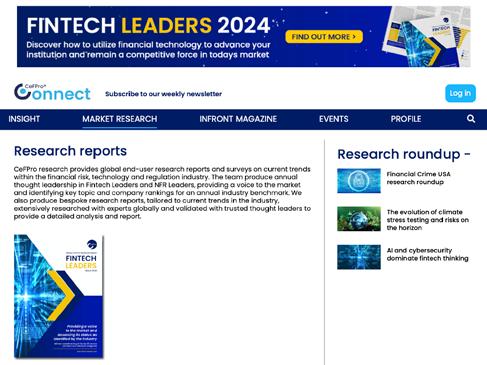
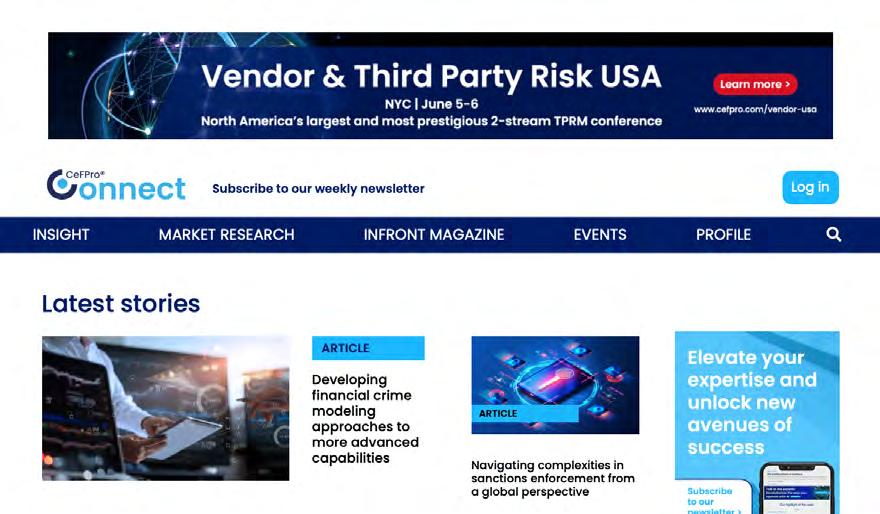
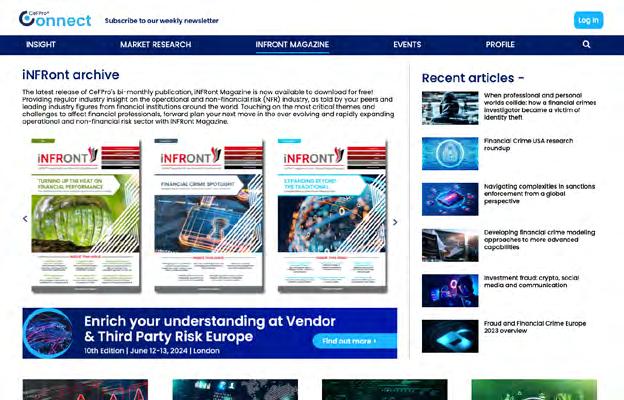


Why Banks Must Adapt: Integrating Climate Risk into Liquidity Management

Incorporating Climate Risk into the Liquidity Framework of Banking
As climate change continues to present significant risks to global financial systems, banking institutions are increasingly recognizing the need to incorporate climate risk into their risk management frameworks. Traditionally, banks have focused on credit and market risks, but the growing impact of climate-related events necessitates a broader approach that also encompasses liquidity risk. This article explores how banks can effectively integrate climate risk into their liquidity frameworks, highlighting key considerations and strategies.
Understanding Climate Risk and Its Impacts
Climate risk is broadly categorized into two types: physical risk and transition risk. Physical risk refers to the direct impact of extreme weather events, such as floods, hurricanes, and droughts, on assets and operations. Transition risk, on the other hand, arises from the process of adjusting to a low-carbon economy, including regulatory changes, shifts in market preferences, and advancements in technology.
Key Takeaway 1:
Credit Risk and Liquidity Risk Interconnection
Climate risk has a profound effect on credit risk, but its impact on liquidity risk is equally significant. Physical risks can disrupt business operations and reduce asset values, leading to increased default rates among borrowers. Transition risks can similarly affect the creditworthiness of firms undergoing structural changes. These disruptions can lead to heightened liquidity needs, as companies draw on credit lines or use more deposits to manage cash flow challenges. Rocco Fanciullo, Unicredit’s Head of Group Liquidity Risk Management, says banks and other organisations dealing in corporate finance must embrace the unique challenges that come in trying to understand the context of climate risk.
“When we think about risk, the normal approach is to explore what happened in the past in the same or similar situation,” he says, adding: “The problem we have with climate risk specifically, of course, is that we can’t observe what happened in the past during dramatic climate events.”
“We need to look at what happened to our customers first, and then what happens to our liquidity buffers, or what happens to the instruments in which the liquidity of the bank is usually parked - in particular, I’m talking about securities.”
He adds: “If we can estimate what the negative effect of climate risk on our liquidity buffers might be, we can then look closely at our customers and assess whether companies that are more exposed to climate risk might have an increase in their liquidity needs. In turn, this will enable us to consider the likely future demand there might be on their credit lines.”
The Importance of Good Data
A robust liquidity risk framework grounded in accurate and comprehensive data is essential for assessing the impact of climate risk. Banks need to identify the transmission channels of climate risk within their organizations. This involves understanding how climate events can affect customers, securities in liquidity buffers, and the broader financial market.
Key Takeaway 2: The Need for High-Quality Data
Effective risk identification relies on high-quality data to assess the materiality and impact of climate risks. Accurate data enables banks to model potential scenarios and quantify risks, ensuring they can make informed decisions. This includes data on historical climate events, market reactions, and projections of future climate scenarios.
Steps to Integrate Climate Risk into Liquidity Frameworks
Risk Identification: Banks must first identify how climate risk can be transmitted into their operations. This includes assessing how physical and transition risks can affect customers, assets, and market conditions.
• Data Collection and Analysis: Collecting relevant data is crucial. Banks should gather historical data on extreme weather events, regulatory changes, and technological advancements. They should also monitor ongoing climate trends and market responses.
• Risk Assessment: Using the collected data, banks need to evaluate the materiality of identified risks. This involves modeling potential scenarios and assessing the impact on liquidity positions. For instance, analyzing how a major flood could affect a bank’s real estate holdings or how a shift in energy policies might influence the value of securities in the bank’s portfolio.
• Steering Actions: Based on the risk assessment, banks should develop strategies to mitigate identified risks. This could include adjusting the composition of liquidity buffers, enhancing credit line management, and ensuring sufficient liquidity reserves to cover increased withdrawal demands.
This article was written with insight from Rocco Fanciullo. Rocco is Head of Liquidity Risk Management at Unicredit SpA. He is a regular speaker, panellist and contributor at CeFPro events, and is based in Milan, Italy.

Preparing for Climate Stress Tests
Climate stress testing is becoming a critical component of risk management for banks. These tests evaluate how banks would fare under severe climate scenarios, helping to identify vulnerabilities and improve resilience.
Key Takeaway 3:
Learning from Historical and Analogous Events
To prepare for climate stress tests, banks should study past extreme weather events and similar economic transitions. Although there are no direct historical precedents for climate-driven economic transitions, analogous events, such as technological revolutions, can provide valuable insights. Banks should analyze how companies adapted during these periods to design effective stress test scenarios.
Impacts on Liquidity Positions
Climate risk can impact liquidity positions in several ways:
Securities Depreciation: Securities issued by companies vulnerable to climate risks may depreciate, affecting the value of liquidity buffers. Banks must estimate potential devaluations and adjust their portfolios accordingly.
Increased Liquidity Needs of Customers: Companies facing climate challenges may increase their liquidity usage, drawing more on deposits and credit lines. Banks need to anticipate these demands and ensure they have adequate liquidity reserves.
Volatility in Derivatives Exposures: Derivatives linked to energy and commodity prices may experience volatility due to climate events. Banks must assess potential margin call requirements and ensure they can meet these demands.
Reputational Risk: Banks perceived as non-compliant with climate regulations may suffer reputational damage, affecting their market position and liquidity. Stress testing should include scenarios that address reputational risks.
Integrating Climate Risk into Regulatory and Programmatic Frameworks: As regulatory bodies increasingly focus on climate risks, banks must adapt their programs and strategies to comply with evolving requirements. This involves:
Incorporating Climate Risk into Regulatory Reporting: Banks should ensure that climate risk assessments are integrated into their regulatory reporting frameworks, providing transparency and demonstrating compliance.
Enhancing Risk Management Programs: Risk management programs should be updated to include climate risk considerations. This includes training staff, updating risk models, and integrating climate risk into overall risk management strategies.
Collaborating with Stakeholders: Banks should collaborate with regulators, industry groups, and other stakeholders to stay informed about best practices and regulatory changes.
Endgame
Incorporating climate risk into the liquidity framework of banking is essential for maintaining financial stability in the face of growing climate challenges. By identifying transmission channels, collecting and analyzing data, assessing risks, and preparing for stress tests, banks can enhance their resilience and ensure they are wellequipped to manage the impacts of climate risk. As the regulatory landscape evolves, proactive adaptation and robust risk management will be crucial for banks to thrive in a climate-impacted world.
Stress Testing Week is your gateway to mastering the art of stress testing and staying ahead in an evolving landscape. Whether you're a seasoned professional or new to the field, this event offers invaluable knowledge and networking opportunities. Why should you join us?
• Customize Your Experience: Choose to attend either day or both, tailoring your learning to your professional needs.
• Networking Opportunities: Connect with top-tier risk management professionals and expand your industry network.
• Cutting-Edge Content: Stay at the forefront of risk management with insights from leading experts.
your approach. Elevate your expertise. See you in Amsterdam! Get started here >

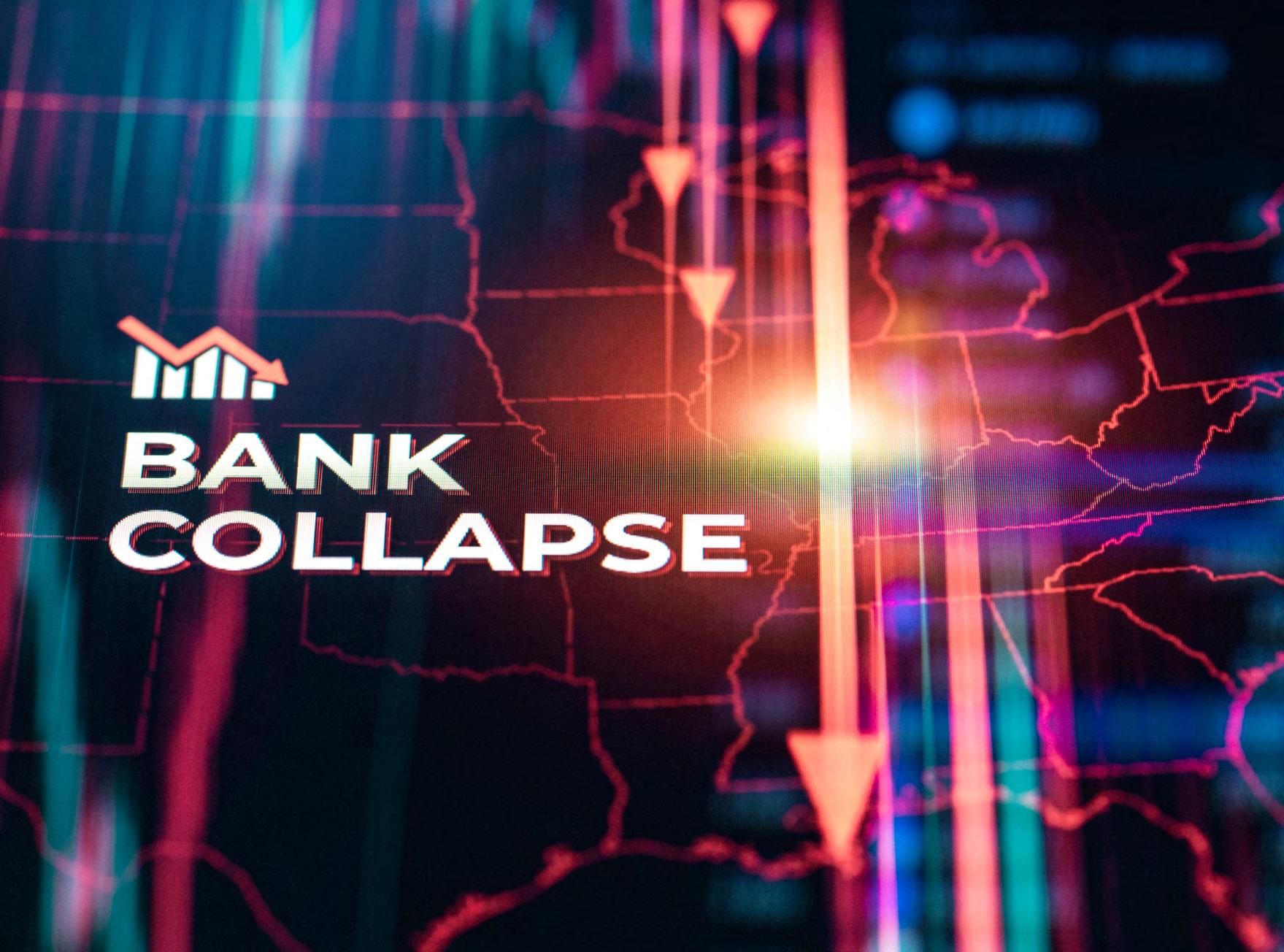
A New Era in Risk Management
Lessons from SVB’s Collapse:
This article was written with insight from Emma Hagan. Emma was appointed to the position of Chief Risk and Compliance Officer (UK) at ClearBank in February of this year, having previously served as Chief Risk Officer for EMEA at Silicon Valley Bank and in various roles at Lloyds Bank and HBOS. She is responsible for overseeing all aspects of ClearBank’s operations in the UK and further strengthening the bank’s position in the UK market.
Diversification and Deposit Insurance
In the aftermath of SVB’s failure, there has been a renewed emphasis on the importance of diversification, particularly in terms of deposit insurance. With limits on deposit insurance, institutions must ensure their deposits are sufficiently diversified across different financial institutions.
This strategy helps mitigate the risk of losing access to funds if a single institution fails. Additionally, the rising interest rate environment has intensified competition among financial providers, prompting businesses to seek more favorable conditions elsewhere.
Nervousness in the Market
SVB’s collapse has also led to heightened nervousness in the market, particularly regarding venture capital investment and business model stability.
management frameworks are adaptable and capable of supporting innovation safely. This involves not only traditional risk management practices but also the ability to manage new dynamics introduced by technologies such as artificial intelligence and digital assets.
Effective risk management in this context requires agile and innovative approaches, as well as the right expertise to navigate these emerging challenges.
Scenario Planning and Stress Testing
The interconnected nature of modern financial markets and the speed at which crises can unfold necessitate a re-evaluation of scenario planning and stress testing practices.
Institutions need to consider scenarios that involve rapid, social media-driven events and develop playbooks for reacting swiftly to such crises.
The collapse of Silicon Valley Bank (SVB) serves as a stark reminder of the vulnerabilities inherent in the financial system, particularly in the areas of interest rate risk management, liquidity risk management, board governance, and regulatory supervision.
Emma Hagan, Chief Risk and Compliance Officer at ClearBank, recently highlighted these failures at our Risk Evolve event in a session that focused on SVB’s downfall and underscored the critical lessons to be learned and applied across the financial sector.
Interest Rate and Liquidity Risk Management
SVB’s collapse was precipitated by significant missteps in interest rate risk management. The bank failed to adequately hedge against rising interest rates, leading to substantial losses on its long-term securities portfolio.
This, coupled with a lack of diversified funding sources, left SVB particularly vulnerable when market conditions shifted.
The lesson here, says Hagan, is clear: financial institutions must implement robust interest rate risk management practices, including dynamic hedging strategies and diversified funding sources to mitigate similar risks.
“We need to look at what happened in terms of winners and losers from SVB’s collapse, and also some of the effects, in terms of root causes.
“What went wrong and what can we learn from that in terms of risk management? What are the things we need to think about at our own firms to do differently, to ensure that we don’t suffer the same failure as SVB?”
Board Governance and Oversight
Another critical factor in SVB’s collapse was inadequate board governance and oversight. Effective risk management requires not just a well-defined strategy but also vigilant supervision by the board to ensure that the strategy is being effectively implemented. Boards need to be proactive, informed, and deeply involved in the risk management processes of their institutions. They must ensure that management is responsive to the rapidly changing risk landscape, particularly in the context of fast-growing and increasingly complex business models.
Regulatory Supervision
The failure of regulatory supervision was also a significant contributor to SVB’s demise. As firms grow and their operations become more complex, the regulatory framework must evolve to keep pace.
Regulators need to adopt more intensive and sophisticated oversight mechanisms to address the unique risks posed by modern financial institutions. This includes a greater focus on the interconnectedness of financial markets and the potential for rapid contagion effects, which SVB’s collapse starkly illustrated.
There is an increasing focus on profitability and the sustainability of business models, as investors and regulators alike seek to avoid the pitfalls that led to SVB’s downfall.
Hagan agrees this nervousness is not confined to the US but is a global phenomenon, impacting financial institutions and markets worldwide, saying: “We’re already seeing some of that play out in banking as a service and some of the withdrawals from the market, along with increasing regulatory scrutiny on those models.
“Again, this is due to the complexity and the interconnectedness of those models making it far more exposed. And they haven’t necessarily got to grips with that yet in terms of what ‘good’ looks like from that market.”
The Role of Social Media
One of the unique aspects of SVB’s collapse was the speed at which it unfolded, driven by the rapid dissemination of information through social media. Unlike traditional bank failures that played out over weeks or months, SVB’s collapse occurred within 24 to 48 hours. This, Hagan says, underscores the need for financial institutions to be prepared for rapid shifts in market sentiment and the potential for accelerated bank runs facilitated by modern communication channels.
Innovation and Risk Management
Innovation in the financial sector, while necessary for growth and competitiveness, brings with it new risks. Institutions must ensure that their risk
This includes ensuring that liquidity stress tests account for the possibility of massive, rapid outflows and that recovery plans are robust enough to handle such scenarios.
“I think risk management needs to undergo the same kind of shift that we’re seeing in the broader market,” said Hagan.
“Risk management still has its place. But how adaptable are our risk management frameworks and are our risk managers able to cope with fast changing market conditions?
“I think bringing in the right expertise, changing the mindset of risk teams and developing more agile and more innovative risk management frameworks is critical to ensuring risk is managed in a very safe way that exploits the opportunity without creating a huge downside risk for the bank.”
What is clear is the collapse of Silicon Valley Bank serves as a powerful reminder of the importance of comprehensive risk management in the financial sector.
By learning from the failures in interest rate risk management, liquidity risk management, board governance, and regulatory supervision that led to SVB’s downfall, financial institutions can better prepare themselves for future challenges.
As the financial landscape continues to evolve, so too must the strategies and frameworks designed to safeguard it.

Harnessing AI for Critical Business Decisions: Benefits and Risks


This article was written with insight from Alexandra Matthews. Alexandra is a Business Developer and Underwriter AI Performance Risk, Munich Re, where she is responsible for analysing and underwriting guarantees for the performance of ML models across industries and writes contractual obligations to manage technical risks, e.g. model/data drift.
In recent years, the adoption of artificial intelligence (AI) has grown exponentially across various sectors, with its applications extending far beyond routine tasks to more critical business functions.
Alexandra Matthews, an underwriter of AI performance risks at Munich Re, highlighted the increasing reliance on AI for critical decision-making and the associated risks and benefits at our recent Risk Evolve event.
Short-term Efficiency and Long-term ROI
Matthews noted that early adopters of AI are likely to experience immediate efficiency gains.
By integrating AI into their operations, companies can improve the speed and throughput of their work, streamlining processes that were previously timeconsuming.
In the long term, these efficiency improvements can translate into substantial returns on investment.
Developing AI systems is expensive, but the potential to free up capital and redirect resources to enhance services can lead to significant financial benefits. Organizations that strategically implement AI can thus realize both short-term and long-term advantages, ultimately enhancing their competitive edge.
Understanding AI Risks
However, the journey to AI integration is not without risks. Matthews categorizes these risks into two main areas: the inherent risks of the AI models themselves and the risks associated with their implementation.
Model Risks
One of the primary risks of AI models is “drift,” which refers to the AI’s inability to adapt quickly enough to changing environments or data. As the world evolves, the data that AI models rely on also changes.
Matthews explains: “I think drift is one of the most important considerations – the fact your AI model
might not adapt quickly enough to changing environments or changing data, as well as some sort of bias that it might develop or learn as it’s as it’s making new rules.
“I think these risks are important for companies to monitor as they use AI in terms of implementation. It’s about making sure that you actually have a very clear use case for what your AI is meant to be for.”
If an AI model does not update its learning processes accordingly, it can become less effective or even erroneous over time.
Additionally, there is the risk of bias. AI systems can inadvertently learn and propagate biases present in the training data, leading to unfair or discriminatory outcomes. Continuous monitoring and updating of AI models are essential to mitigate these risks and ensure they remain accurate and fair.
Implementation Risks
When it comes to implementation, having a clear use case for the AI application is crucial. Companies must define the expected outcomes and continuously compare them with actual results to ensure the AI functions as intended. Furthermore, privacy and security are paramount.
AI systems often require access to vast amounts of data, including personal identifiable information (PII). Ensuring this data is handled securely and in compliance with privacy regulations is essential to maintaining user trust and avoiding legal repercussions.
The Human-AI Interaction
Studies have shown that people have the most positive interactions with AI when they believed they were interacting with a human.
This finding underscores two critical insights. First, it emphasizes the value people place on human interaction, even in a digital context. Second, it demonstrates AI’s potential to enhance customer experiences by performing functions that improve efficiency and satisfaction.
“I think it’s a good lesson for banks and other companies providing services to realise that they could utilise AI to fulfil some functions to improve people’s interactions and the way that they access and interact with services – and then free up some of that human capital to really engage deeply with people, talk to them about their specific needs and wants, and actually enable people to have a better experience,” said Matthews.
Despite the benefits, transparency remains crucial. Organizations should be upfront about when customers are interacting with AI rather than a human. This honesty builds trust and helps manage expectations.
Companies, particularly in customer service-oriented sectors like banking, can use AI to handle routine inquiries and tasks, freeing up human employees to engage in more meaningful interactions with customers. This approach can lead to better overall experiences and deeper customer relationships.
Proactive Risk Management
Matthews stressed the importance of proactive risk management in AI deployment. Many events focus on the potential benefits and opportunities AI offers, but managing risks should also be viewed positively. Effective risk management is not a zero-sum game; it can lead to significant gains. By anticipating and mitigating potential exposures, companies can avoid costly pitfalls and enhance their AI strategies’ overall success.
While the benefits of AI in critical business functions are clear —ranging from efficiency gains to improved customer interactions —so are the risks.
Companies must navigate these risks carefully by continuously monitoring AI models for drift and bias, ensuring clear implementation strategies, and safeguarding privacy and security. Additionally, transparency in AI-human interactions and proactive risk management can further bolster the successful integration of AI into business operations.
As AI continues to evolve, businesses that prioritize both the advantages and the management of risks will be better positioned to harness its full potential. The future of AI in business promises significant advancements, but only for those who approach its deployment with a balanced view of both opportunities and challenges.

The Critical Nexus of Environmental Risks and Financial Systems

This article was written with insight from Nicholas Silitch, Nicholas is the former Chief Risk Officer for Prudential, based in Newark, New Jersey, having previously spent nearly 30 years with the Bank of New York Mellon. He now works as a consultant, senior adviser, author and speaker, offering perspectives on the investment world that come from a uniquely practical place and a birds-eye view of the market’s evolution from 1980 through today.
Risk management is a cornerstone of the financial industry, primarily concerned with defining the scope and parameters of potential distributions and the shape of outcomes. For decades, data has been collected and analyzed to predict interest rate movements and credit cycles. However, much of this data may be flawed or biased, having been accumulated during periods of relatively stable interest rates and asset values. As the global landscape changes, this data might not hold as much predictive power, leading to unforeseen consequences. This concern underscores the fragility of two critical ecosystems: the financial system and the natural environment.
The Financial System: A Precarious Balance
The global financial system, heavily reliant on fiat currencies and predominantly linked to the US dollar, is a foundational yet imbalanced structure. The US dollar constitutes over 60% of the world’s financial assets, despite the US accounting for just over 20% of global GDP. This disproportionate reliance is precarious and could lead to significant instability. When this imbalance corrects itself, it could redefine volatility in financial markets, causing widespread repercussions.
Environmental Degradation: Beyond the Tipping Point
The second ecosystem at risk is the natural environment. Since the late 1800s, the commercialization of electricity and the advent of the internal combustion engine have spurred exponential growth in carbon emissions. Initially, society was unaware of the environmental costs. By the 1970s, issues like acid rain highlighted these costs, but significant action was delayed due to economic and practical challenges. Today, we face the consequences of this inaction, with many experts believing we are past the tipping point of environmental degradation.
The Intersection of Finance and Environment
The interplay between environmental risks and financial systems forms a critical nexus that could shape our future. Financial institutions are increasingly burdened with the responsibility of addressing climate change. This responsibility includes complying with regulations, reducing carbon investments, and highlighting the true drivers of climate risk. However, financial institutions alone cannot solve these problems; societal issues require societal solutions, driven by policymakers and the public.
Climate Change and Financial Institutions in the US
Within the United States, the impact of climate change on financial institutions is multifaceted. From an insurance perspective, climate change is not a typical insurable event because property and casualty insurance is repriced periodically, not accounting for long-term sustainability risks. While specific asset exposures, such as real estate in areas susceptible to rising sea levels, may be impacted, the overall effect on financial institutions is relatively muted. The primary concern lies in transition risks—navigating regulatory and policy changes that are often unpredictable and subject to public perception.
Global Coordination: A Necessity for Effective Solutions
The divergent approaches of different regions, such as the EU, the UK, and the US, complicate the global response to climate change. Effective solutions require global coordination, as environmental issues transcend national borders. Climate change is a global societal problem, affecting regions differently but universally requiring a coordinated effort. The ideal scenario is a unified global response, but the path to this goal is fraught with challenges.
The Role of Financial Intermediaries
In the interim, financial intermediaries play a crucial role. They are often tasked with adjusting the cost of capital for various economic sectors, influencing investment and operational decisions. This intermediary role can lead to disjointed and differentiated responses, reflecting the complex and often conflicting priorities of different stakeholders. Financial institutions must navigate this landscape, balancing regulatory compliance, investor expectations, and their role in driving sustainable practices.
Conclusion
The nexus between environmental risks and financial systems is a critical area of concern that demands immediate and coordinated action. The financial system, while robust in many ways, faces significant challenges from its disproportionate reliance on the US dollar and potential future volatility. Simultaneously, environmental degradation has reached a tipping point, necessitating urgent and effective global responses.
Financial institutions are at the forefront of this intersection, tasked with mitigating climate risks and influencing broader societal changes.
However, true progress requires collective action from policymakers, the public, and global coordination. Moving forward, the focus must be on developing comprehensive strategies that address both financial stability and environmental sustainability, ensuring a balanced and resilient future for all.
Risk Management in Financial Institutions: Strategies for Future Preparedness
This article was written with insight from Kanwardeep Ahluwalia. Kanwardeep is Co-Head Global Markets Risk & Deputy Chief Risk Officer for EMEA at Bank of America Merrill Lynch. He has previously held senior risk management roles at Swiss Re, Bear Stearns & Co, and the Securities & Futures Authority.
Risk management in financial institutions is a multifaceted discipline that combines rules, analysis, and influencing skills. Understanding the lessons from past difficulties and preparing for future threats is crucial. This article explores three key areas of challenge in risk management and offers insights into how financial institutions can navigate these complexities effectively.
Challenges in Risk Management
Kanwardeep Ahluwalia, Co-Head of Global Markets Risk at Bank of America Merrill Lynch, broadly identifies three key areas that organizations need to double down on to ensure a strategic approach to risk management: natural privacy, risk tempo, and the infrequency of major risk events.
1. The Natural Privacy of Risk Management
One of the fundamental challenges in risk management is the inherent privacy surrounding it. Major issues in financial markets are often publicized, while smaller problems remain obscured. This selective visibility creates a skewed perception of the risks involved and can hinder comprehensive risk management strategies. To address this, institutions need a culture of openness where losses or adverse events are analyzed transparently. By adopting a noblame approach, institutions can distance themselves from embarrassment and privacy issues, thereby fostering a learning environment from past incidents.
“The challenge of risk incidents being handled in a private way makes it hard for a broader audience to learn the lessons of those incidents,” Kanwardeep says.
“I think you need a culture of openness in an institution where you look at losses or bad events for the institution on a ‘no-blame’ basis and you train a broad group of people to analyze those incidents to try to combat the natural inclination to privacy and occasional sense of internal embarrassment.
“If you can, you create a distance from both of those issues and actually create greater learning..”
2. The Tempo of Risk Management
The speed at which risk managers need to operate in financial markets presents another significant challenge. While governance structures often emphasize preemptive risk assessment, realtime risk management requires agility and quick decision-making. Institutions must balance the need for thorough risk assessment with the ability to respond swiftly to emerging threats. This can be achieved through practices that simulate real-time risk management scenarios, encouraging precise and timely discussions between risk managers and risk takers, even during periods of market calm. To mitigate this aspect of risk management, Kanwardeep advocates a process he describes as risk underwriting – essentially an approach to enable risk managers to think ahead.

“I think you need certain routines where you practice risk management in the moment, and that means being able to talk to the risk taker about small issues and having very precise discussions at the time, because in a crisis, what you learn from the risk taker and the decisions you take after that learning are critical.,” he says.
3. The Infrequency of Major Incidents
Risk managers often face the dilemma of managing for extreme, infrequent events. The rarity of such events means that risk management skills are not frequently tested, making it difficult to gauge their effectiveness. To counter this, institutions should engage in regular, dynamic discussions with risk takers, focusing on small but noteworthy changes in risk parameters. This proactive approach helps maintain a high level of preparedness for major incidents by continuously honing risk management skills.
“What we focus on at Bank of America is to engage with the risk takers on a very dynamic basis much earlier and much more frequently. This empowers them to take small but noteworthy chances in risk which we then follow up on with them on a very dynamic basis,” says Kanwardeep.
Building a Culture of Openness
Creating a culture of openness involves analyzing losses and adverse events without assigning blame. Training a broad group of people through incident analysis can combat the natural tendency towards privacy and embarrassment. This approach encourages transparency and continuous learning, essential for effective risk management. By fostering an environment where incidents are openly discussed, institutions can gain valuable insights and improve their risk management practices.
Enhancing Real-Time Risk Management
To manage risks effectively in real-time, institutions need to develop routines that practice risk management in the moment. This involves having precise, timely discussions about small issues with risk takers. During market calm, it is tempting to have loose conversations, but instilling discipline in these discussions can prepare risk managers for crises. By practicing precise and quick decision-making in lowstress situations, risk managers can better handle highpressure scenarios.
Proactive Risk Management Strategies
At Bank of America Merrill Lynch, a proactive approach is employed through a system called strategy signals.
This system automates tests across thousands of risk metrics to identify unusual changes in risk parameters. Unlike traditional methods that react to nearing limits, strategy signals allow risk managers to investigate significant changes early. For example, a move from 10% to 40% of the limit, though within risk capacity, prompts discussions with risk takers about the cause and future management of the risk. This method fosters a proactive risk management culture, ensuring readiness for larger, infrequent events.
Formalizing Risk Identification
A formal process of risk identification is essential for uncovering vulnerabilities. Traditionally, second-line risk teams handle this process, but at Bank of America Merrill Lynch, risk takers are also involved. They are asked to identify the risks they plan to take, which are then reviewed and challenged by the second line. This regular, collaborative exercise helps keep risk identification refreshed and prepares the institution for emerging risks.
The Importance of Tone from the Top
Leadership plays a crucial role in shaping the risk management culture. The tone from the top, including from the Head of the risk-taking function, the Chief Risk Officer, and the CEO, must emphasize the importance of frequent and constructive dialogue between risk managers and risk takers. Business leaders should encourage engagement in these discussions, highlighting their importance for the overall benefit of the firm.
Addressing Conduct Risk
Post-global financial crisis, conduct risk has become a focal point. Institutions must have clear conduct rules and be willing to discuss breaches openly. This approach is not about creating fear but about learning from mistakes to improve risk management practices. Assessing conduct when limits are breached helps identify lessons that can enhance future risk management.
Leveraging Technology for Risk Management
Technological advancements offer significant opportunities for risk management. Enhanced data analysis capabilities allow for early risk detection through sophisticated risk signals. The ability to track vast quantities of data over time and improve data visualization techniques helps differentiate signal from noise. Additionally, the development of large language models can facilitate business-quality writing and documentation, crucial in the heavily regulated financial services industry.
Endgame
Effective risk management in financial institutions requires a blend of openness, real-time agility, proactive strategies, and robust leadership. By fostering a culture of transparency, engaging in dynamic risk discussions, and leveraging technology, institutions can enhance their preparedness for future threats. Regularly practicing and refining risk management skills ensures that institutions are not only ready for major incidents but can also navigate the complexities of everyday risk management with confidence.

and Consumer Duty: Insights from Industry Experts
This article was written with insight from Paul Gill, the Chief Risk Officer for the Mortgage Advice Bureau. Paul is a compliance and risk specialist whose long and varied career has also seen him work at director level for businesses such as Metro Bank, Deloitte and Castle Trust, as well as the Managing Director of Regulatory Risk Consulting.
Standfirst
The financial services industry is undergoing significant changes, particularly in the realm of regulatory compliance and consumer duty.
Here, we examine key perspectives on the importance of consumer duty, the role of the Financial Conduct Authority (FCA), and broader trends affecting financial services.
The Evolution of Consumer Duty
Consumer duty is emerging as a critical focal point for financial services firms. The Financial Conduct Authority (FCA) has been proactive in setting guidelines
that emphasize the importance of consumer-centric practices.
According to industry experts, this is just the beginning of a more stringent regulatory environment. The FCA’s expectations are clear: firms must integrate consumer duty into their core operations and strategic planning. As deadlines for regulatory requirements approach, firms can expect increased scrutiny.
“A key output for all firms will be the management information – the data and evidence that they are creating the right outcomes for their consumers,” says Paul Gill, Chief Risk Officer at the Mortgage Advice Bureau.
“These are the sort of things they’ll need or want to put into their annual report for the board to be able to satisfy itself that they’re doing the right things and can evidence it.”
But he points out that this isn’t the only responsibility companies face in terms of being compliant with the act, Paul says.
“There’s also the deadline of July 31 this year for closed products, which give organizations an extra year to ensure that existing customers using those products were getting the right outcomes from those as well,” he adds.
“The reality is it’s an ongoing activity now. It’s reinforcing a culture through the organization that this is how we do business. In the FCA’s language, this is not a ‘once and done’ exercise. It is continuous.”
The new regulations underscore a shift towards a more holistic assessment of a firm’s operations, focusing on customer outcomes as a measure of success.
Key Trends and Risks in Financial Services
Looking ahead, the dialogue around consumer duty will continue to evolve. Firms will need to adapt their practices continuously to meet regulatory expectations and better serve their customers. This ongoing evolution presents both challenges and opportunities. Firms that proactively embrace these changes can position themselves as leaders in the market, building trust and loyalty among their customers.
One significant trend affecting the financial services industry is the fluctuating interest rate environment. Over the past 18 months, interest rates have been a source of uncertainty. Stability in interest rates is crucial for fostering market confidence, particularly in sectors such as mortgage lending. An expert highlighted that the stabilization of interest rates would be beneficial for all market participants. When rates stabilize, consumers are more likely to engage in borrowing and investing activities, leading to market growth. This is particularly pertinent for the mortgage sector, where confidence in stable rates can drive consumer participation and market expansion.
Opportunities on the Horizon
The evolving regulatory landscape and market conditions also present new opportunities for firms. Embracing consumer duty can differentiate firms from their competitors. By prioritizing customer outcomes and ensuring transparency, firms can build stronger relationships with their customers. This customer-centric approach not only meets regulatory requirements but also enhances the firm’s reputation and trustworthiness.
Moreover, the anticipated stabilization of interest rates could catalyze growth in various financial sectors. For lenders, a stable interest rate environment can lead to increased consumer confidence and higher loan origination volumes. This, in turn, can drive profitability and market share expansion. Firms that can navigate these changes effectively and align their strategies with consumer needs and regulatory expectations will be well-positioned for success.
Preparing for the Future
As the financial services industry continues to evolve, firms must stay ahead of regulatory changes and market trends. Proactive engagement with regulatory bodies like the FCA is crucial.
Firms should view regulatory compliance not as a burden but as an opportunity to enhance their operations and customer relationships. Regularly updating and refining their consumer duty practices will be essential.
In addition, firms should monitor economic indicators and interest rate trends closely. Understanding the broader economic environment can help firms make informed strategic decisions and capitalize on market opportunities. By staying informed and agile, firms can navigate uncertainties and position themselves for sustainable growth.
In summary, the future of financial services is shaped by the dual forces of regulatory evolution and market dynamics, and the emphasis on consumer duty by the FCA signals a new era of accountability and customercentricity in the industry.
Firms that embrace these changes and prioritize consumer outcomes will not only comply with regulatory requirements but also thrive in a competitive market.
Stabilizing interest rates offer a promising horizon for market growth, particularly in lending sectors.
By aligning their strategies with these trends, financial services firms can seize opportunities and build resilient, customer-focused businesses.
And as the industry continues to evolve, staying ahead of regulatory changes and market conditions will certainly be key to long-term success.

We Need To Talk About Enablement in Risk
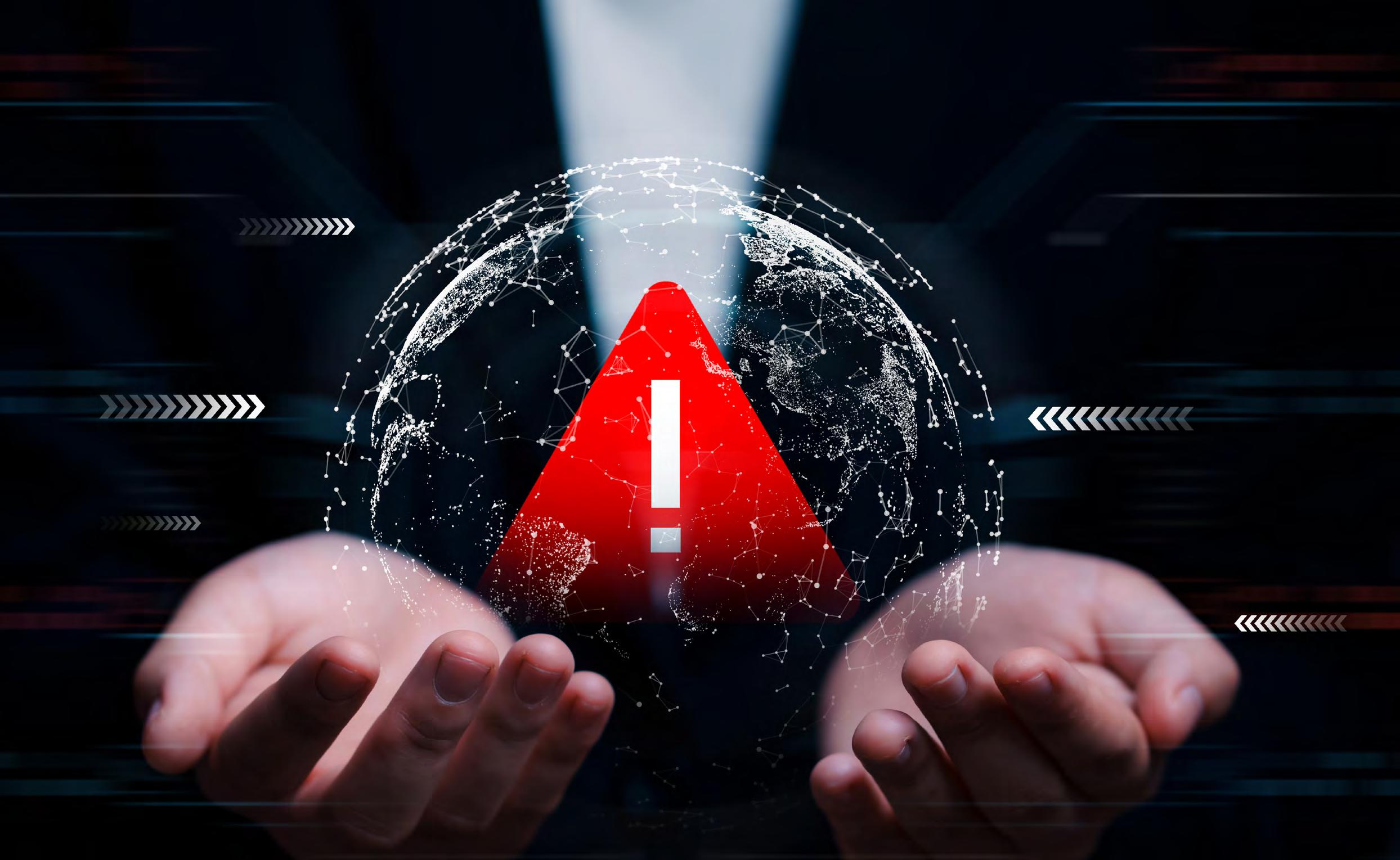

How do you assess the maturity level of a firm’s third party risk management practice - and what key indicators do you look for to determine areas of improvement?
So I would look at a firm’s third party risk management arrangements. Is there a third party risk management program? If so, how long has it been in place, and what types of resources are involved in the program? And the reason ask that last question is because risk programs are generally successful when the firm dedicates people to a third party risk management program. If you have temporary resources, how do you demonstrate the continuity and importance of third party risk management for financial services?

In terms of the strategic supplier relationships that you have, what are the best practices for maintaining those strong, mutually beneficial partnerships, especially in an environment that is rapidly changing?
Right now, we work together in identifying who are those partners that we are strategically in tune with. And we’re not going to understand who those are without us having a really good level of engagement with our executives and business stakeholders. Best practice for me includes working with the right people across the firm in understanding which of our partners we’ll be strategically involved with in the coming 3 to 5 years.
Once we’ve done that, it’s then about understanding how we’re managing those relationships. Where are we from a performance, innovation, and commercial perspective? And what I mean by that is understanding whether we have the right cadence in place to harness strategic insights and development.
guess, the team and I work alongside our partners to create that environment where the partner feels that they not only are they valued a strategic partner, but also that we welcome their innovation, we welcome new ideas, we welcome new ways of working together.
The challenge then is how we can connect the dots, and we connect through the right people in the business across the firm. More importantly, we need to ensure that we’re getting some tangible actions and good outcomes.
The truth is that many firms have great conversations with great partners, but how many of them actually go to the next phase? Our role as a team and function is to step in to make sure those conversations are ongoing. But we also need to embrace the fact that some of those also come to a natural close.
Bringing that to life, it’s one thing to have great conversations and great initiatives, but where are the key decisions? Where are those made? Some of these are made at a very senior level, some can be made at a business level. But as a team, we play an important role in making sure those strategic discussions happen and are concluded.
We need to make sure that those one, two, three initiatives that we want to take forward are taken forward in the right way. But for those where we decide it’s not the right time or we may not have the necessary funding, etc., we need to ensure those decisions are also made and everybody is transparent with each other, so both parties can move forward and concentrate on other things.
So that presumably requires some level of tracking and benchmarking and reviewing outcomes and against expectations. Is that an evolving process or is that already established effectively across the business?
I mentioned at the outset that one priority is to understand and identify who our strategic partners are by working with our senior leadership team. Once we’ve done that we look at the cadence that we have in place through regular executive review meetings.
And by having all of that in place, in my experience I’ve seen a number of initiatives go from ground level all the way through to delivery. And we’ve seen a number that have naturally stopped at the right place with a view to either having further conversations again in the coming years or deciding it’s not something we want to take forward at this moment in time.
So, part of that process for you, presumably has been ensuring that the relationships you build within the business are founded on the basis that it’s okay to walk away from something if it’s not right, but also to recognise that risk is, by nature, risky and that it’s okay for things to go wrong as long as lessons are learned?
Yes – 100 percent. And think one of the lenses that you apply to a strategic partner is that just as we celebrate our successes, we also hold up our hands when things don’t quite go according to plan. And that means being bold enough and trusting each other enough to call it when we feel things are not quite working or things are not punching through, or things are not probably getting to the right level.
In my experience we do have a level of maturity with our partners. They’ve been in the trenches with us, but they’ve also been at the forefront when we’ve done
Shamial Afzal is the Global Head Strategic Supplier Oversight at Legal & General Investment Management and has more than 30 years’ business experience, the last 15 spent leading the management, governance, oversight, compliance, risk and strategic management of Supply Chain Services. He has previously worked at MG Prudential and Coutts.
new, fresh initiatives and they’ve stood shoulder to shoulder with us when things have been challenging.
But I go back to that lens of measuring how strong you are as partners within that process and that cadence I talked about in terms of punching through and having honest conversations.
also think its important stakeholders understand some of the challenges our partners may be facing so we can support, facilitate, coordinate, drive, and own any of those topics that may be uncomfortable, say, for a business to raise with a partner. Building relationships is a continuous process.
How have you found the challenge of trying to balance the need to allow people to innovate and create, but also have all of those mechanisms and instruments in place to ensure that you catch problems early?
would probably call this fluidity. As you’d expect, my experience has shown there must be rigorous governance so for me it’s about understanding who the right people are to support and drive that level of oversight.
Businesses are complex and every stakeholder is looking at their particular piece of the jigsaw. I think where we have succeeded is in understanding how we bring that jigsaw together.
As you’re doing that, there are likely to be a number of risks, issues and challenges involved. So, have we mapped the right people to the right pieces of work? Have we taken them through our risk assessment process?
In doing that we already have a sense of comfort that by the time it comes to a key decision point, it’s already gone through the risk assessment process and the relevant parties have had sight of it.
In my experience setting up various committees and forums so that even if something has been missed at an early point, we’ve got that assurance that it will go through a check and challenge once it gets to committee or a board level.
And because you’ve got that effective framework established, with all the attendant checks and balances, it means you can innovate with confidence at that point as well, right?
It does start with a framework, and going back to the start of this conversation, the presence of a framework is one of the things I’d be looking at in a potential partner firm. It may not be called third party risk management – it may be called an outsourcing policy, or whatever – but that framework should allow you to manoeuvre and to be able to be innovative.
And that framework shouldn’t be there to strangle you or limit what you need to do. I would look at past initiatives. How have they gone? How have they been measured? Because when you’re working in a partnership – no matter how successful – there will be things that have not gone quite according to plan. Again, how rigorous was the lessons learned process? Where were these discussed? Where were these then acknowledged? Were there any further actions on the back of any lessons learned?
So next time there’s such an initiative, we can build on past successes or failures.
So, in many ways, then, it sounds like third party risk management is as much about enablement as it is about prevention?
Completely. Although there are regulations we need to comply with, if you have the right processes up front, you don’t have to worry about things like did do my exit strategy properly? Did I do my exit plan properly? No, you’ve already done that. That was part of the process of getting up and running. And when we look at strategic relationships and partnerships, we are confident 99.9 percent of our partners have gone through the same type of ‘check and challenge’ process that we’ve been through, because that’s why we’re doing business with them.
Strategic relationships don’t happen overnight. Partnerships don’t happen overnight. It used to be that you’d be looking at a minimum of ten years of working with a firm before you could be termed a partnership. That may or may not be true today, but you have to have time working with a firm to get to know them as they get to know you.
You need to have gone through some of the wounds and scars together and come out the other side. You need to feel confident enough to stand up and hold your hands up when things may not have gone according to plan.
think with those three components strengthen you as a firm and as a strategic partner and puts you both in a position where you’re ready to do some really exciting and wonderful things.

Revolutionize your approach to AI with CeFPro’s groundbreaking AI in Financial Services Global Benchmarking study!
Don’t just follow
the
trend – shape it.
Dive into the cutting-edge uses of AI as we reveal global trends, challenges, and opportunities, and what this means for risk professionals.
Align yourself with peers, uncover key investment areas, and gain the strategic edge needed to revolutionize your approach to AI-powered risk management.
Take part here >

EVENTS CALENDAR 2024

www.cefpro.events/creditriskusa

www.cefpro.com/vendor-usa



www.cefpro.events/bsmusa

www.cefpro.com/ai-banking-usa CeFPro®
For more information, including agenda, speakers, location, and registration, visit www.cefpro.com/forthcoming-events


7th Annual | November 5-6, 2024 www.cefpro.events/cst www.cefpro.events/cst www.cefpro.com
www.cefpro.events/FCEU

www.cefpro.com/vendor-risk
For more information, including agenda, speakers, location, and registration, visit www.cefpro.com/forthcoming-events
